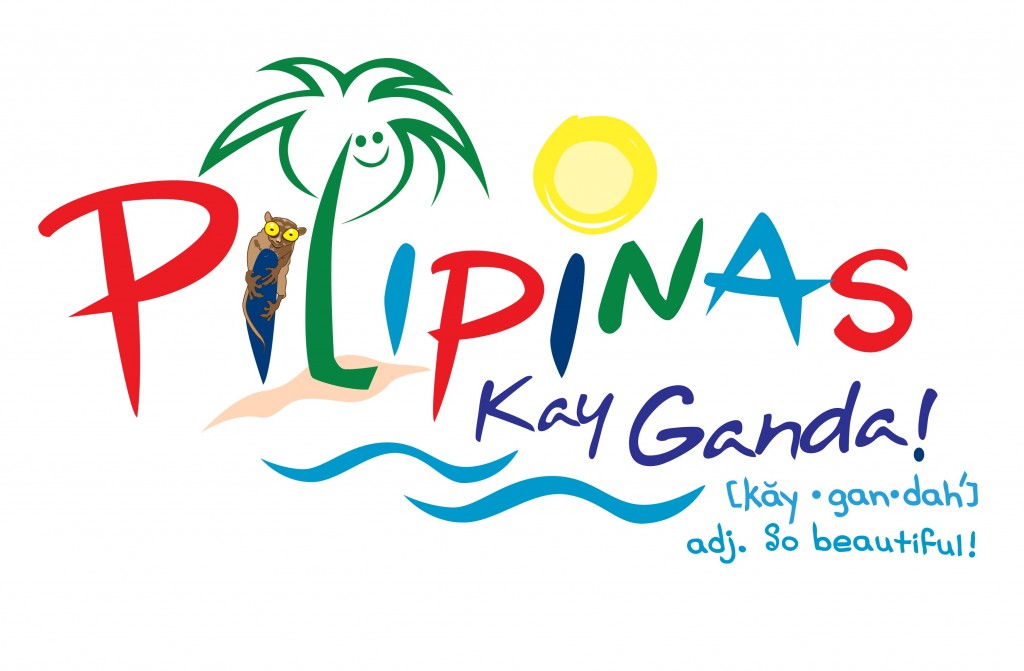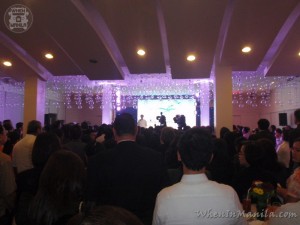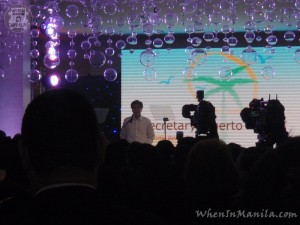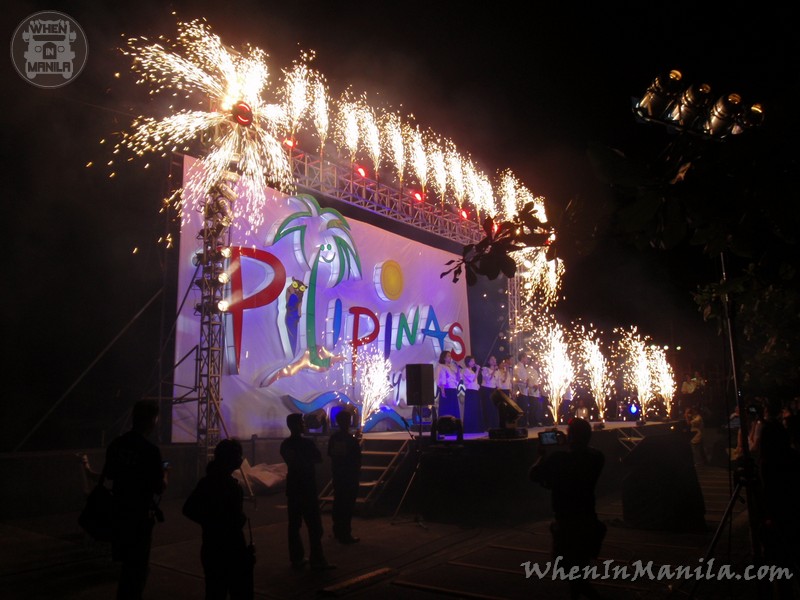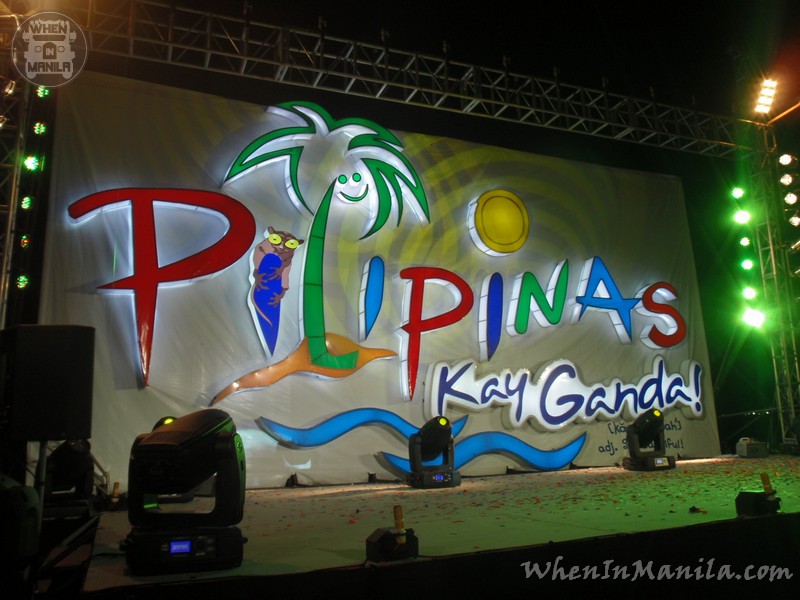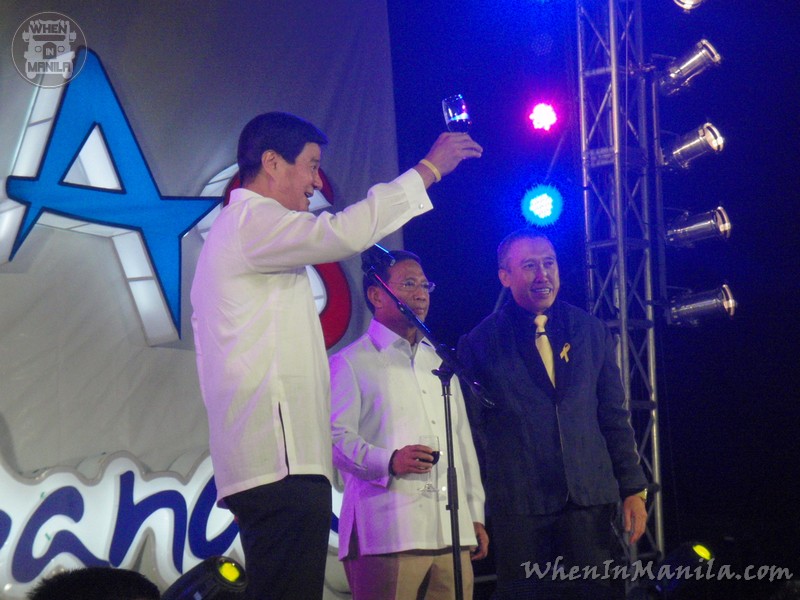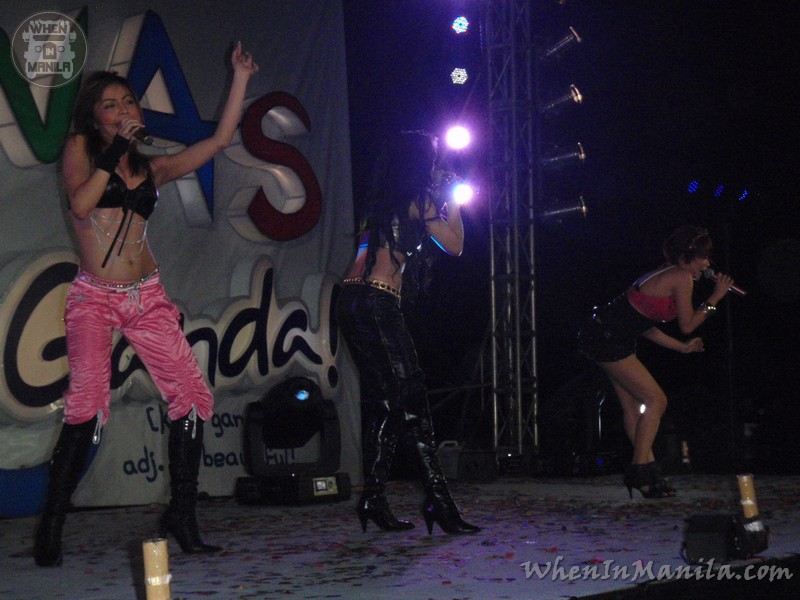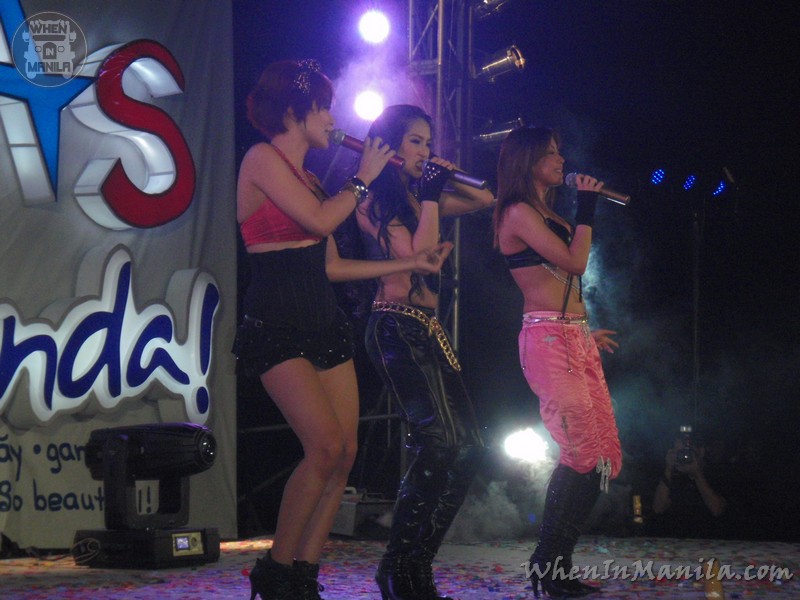So there’s a lot of talk about the new branding for the Philippines, as unveiled last night at an event hosted by the Philippines’ Department of Tourism (DoT).
They gave invited guests and members of the media a first look at the new campaign under the new slogan of “Pilipinas Kay Ganda.”
There are mixed opinions about the new direction for our tourism and the branding we hope to package our country as. Unfortunately, most of the comments and opinions I’ve read have been on the negative side.
One of the main comments I’ve been seeing is that our slogan is in the native Filipino language, and thus, may not be as appealing to foreigners. I however am not so sure about that criticism as this may actually peak the curiosity of outsiders as to what the slogan “Kay Ganda” really means.
All I know is that we won’t know for certain whether or not this new idea is good or bad until we look back at this a few years from now. For now, I suggest we hope for the best and support them the best way we can. Hopefully, we can trust these government officials to be doing what they believe is the best thing for the tourism industry.
For more info and for a detailed explanation of the reasoning behind this new Philippines Branding campaign and logo, check out the Philippines Department of Tourism (DOT) Secretary Bertie Lim’s full speech below:
–
FULL SPEECH OF PHILIPPINE TOURISM SECRETARY BERTIE LIM
FOR PREVIEW OF BRAND PHILIPPINES
Distinguished guests, ladies and gentlemen… Good evening.
Thank you for joining us tonight as we give you a preview of the new Philippines brand that will be the centerpiece of our tourism promotional programs and advertising campaigns in the years to come.
It is the result of intensive market research and a rigorous branding process done by one of the large agencies in the country. And I think it is a compelling brand, both in form and substance. But I must quickly add that it is not complete, in the sense that we have yet to develop the campaigns. Nor is it final. We still have to do market testing and FGDs to refine the brand. At best, it is a work in progress.
We believe that a country brand is so important that before we commit ourselves to the production and placement of expensive TV commercials, we would like to share with you, the industry stakeholders, the emerging brand. It is in keeping up with the President’s philosophy of public-private partnership. Your inputs will help in strengthening the brand even more.
In many cases, a rebranding exercise by a nation is met with stiff resistance. In 2007, when Singapore first toyed with the idea of rebranding, an article in the Singapore Business Times openly criticized the government for even considering it.
The article declared, “The latest effort by the government to craft and communicate an all-encompassing message to the world about what Singapore is all about, what makes it unique and great, etc … is likely to fail.” It went on to argue that Singapore has firmly established itself as the premiere business destination. Why repackage Singapore to mean something else? Why fix it when it ain’t broke?
Similarly, some people are questioning the wisdom of our own rebranding. Why not just build on the brand equity of Wow Philippines? With our limited budget, can we really successfully launch and sustain a new brand? I will address those questions later.
Meanwhile, Singapore launched its new brand early this year. And already, they have achieved their arrival target for the year as early as October. We can only conclude that Singapore has successfully repositioned itself from a business destination to one where you can work and play. Of course, the brand launch was timed with the opening of a theme park and casinos.
There’s an important lesson here.
Simon Anholt, foremost authority on Nation Branding, tells us that positioning a country’s brand is about highlighting the attributes that differentiate it from other nations. But the points of difference must be relevant, distinctive, and believable.
Without a doubt, Singapore’s old brand was relevant to its primary market –the business traveler. It was believable. The business and communications infrastructure were in place. And it was distinctive. Singapore was one of the few, if not the only one, who can claim to be the business hub in the region.
When they expanded their market to include the leisure traveler, they needed to project a new Singapore. The idea of a “work and play” destination was certainly relevant to this new market. The casinos and theme park made it believable. And once again, Singapore can lay claim to that distinctive brand.
Of course, a brand must also have attractive visuals and a catchy slogan. And Singapore’s new brand has that too.
As we reveal our own brand tonight, I am confident that you will find the visuals charming and the slogan catchy. But the more important questions are: Is it relevant? Is it distinctive? And is it believable?
In the last four months, we have received many brand suggestions from well-intentioned people. Each proponent is passionately convinced that it is the brand that will bring in the tourists in flocks. Using the three brand positioning questions to test the suggested brand will give us an idea of how the brand will fare.
Let me give you just two examples.
One brand suggestion is “Latin Asia”, highlighting our unique Hispanic heritage brought about by over 400 years of Spanish rule. It certainly is distinctive. We are the only one in the region who can claim it, offering a unique experience in our rich culture and character as a people. It conjures images of Spanish architectures combined with song, dance, and romance. It is believable. It reflects both in our looks and in our way of life. But is it relevant? Is it compelling enough to make tourists prefer us over our neighbors as a leisure destination? Maybe. Maybe not.
Another suggestion is to highlight our peace-loving nature as a people, which we really are, deep inside. The idea is to counter the negative image resulting from the August 23 incident. It is definitely relevant, especially since we are addressing a current concern. It is distinctive. I don’t know of any country in the region claiming to be “peaceful” or “peace-loving”. But is it believable?
I think it will take a lot of effort and money to convince travelers, especially when they frequently see in the news stories of crime and violence. Besides, it can easily be parodied. I can almost imagine the CNN headline the next time a similar incident like August 23 happens: “Philippines: A Place Where You Can Rest in Peace.”
The brand you are about to see is relevant, distinctive and believable. It extols our innermost beauty, and not just of our destinations, but also of our people and everything else that we do. It is something that we can distinctively claim, and every foreigner who has visited our shores will attest to it. It is also relevant and appealing to a market constantly searching for a more beautiful place and experience.
But when we present it to others, we receive mixed reactions, eliciting either excitement or disbelief – not so much with the message, but with the means we chose to convey the message. It is a radical departure from what our neighbors are doing, and to the faint of heart, a bit risky.
Simon Anholt, in his article “From Nation Branding to Competitive Identity” rightfully observed that many tourism campaigns are so similar that it leads to commoditization. When our neighbors are claiming to be amazing, incredible, charming, inspiring, and truly Asia – what can we really say that will make us more than just another Asian destination?
We need to be more daring in expressing our brand, if we are to rise above the clutter.
When presented in the right context, we often end up making our audience full-pledged supporters of the new brand. This was the case when we presented it to some of you. This was even more so when we presented to the President. He even gave his own inputs in terms of colors and other visual elements, which are now part of the brand you will see tonight.
Going back to the questions – “Why not just build on the Wow Philippines brand?” and “Can we afford to launch and sustain a new brand?”
The answer is quite simple. At a time when every nation, big or small, is either creating a new brand or repackaging their current ones, would you rather rehash an 8-year old brand? Besides, a new brand always generates a buzz that translates to more media mileage for the same promotional budget.
Even more importantly, this is a good opportunity for us to express in a fresh manner the hope and optimism that the Aquino administration represents.
Finally, let me just say that a brand, by itself – no matter how solid the concept is, no matter how stunning the visuals are and how compelling the slogan is, no matter how big the budget is – cannot guarantee success.
In 1997, Prime Minister Tony Blair endorsed a new brand for the UK – “Cool Britannia”. The new brand repositioned Britain as a modern, forward-thinking nation and a world leader in creativity and innovation; a sharp contrast to the snooty and anchored-in-past-glory image of the old brand, “Rule Britannia”.
It made sense. It was distinctive and caught the essence of everything young and trendy about modern Britain. From BritArt to BritPop, from fashion to business, it sought to encapsulate the national creative spirit of the times. It was also relevant to the changing mood of its traditional markets.
Four years later, the brand was declared dead. There was so much debate about it that in the end, there was no critical mass of support for the new brand from among its leaders and citizenry. If it was not believed by its own people, how can you expect people from other nations to believe in it?
In the end, it is the faith and trust in the brand of the various stakeholders that can make or break a brand.
Some of you came tonight with your own brand idea in mind. I can tell you with conviction that if you cannot convince 50 other people in this room who brought along their own brand ideas, that yours is the best brand, it has absolutely no chance of succeeding.
That’s why I’d like to invite all of you to join hands and rally behind the brand we are about to reveal. Together, let’s make the brand not only believable, but also real.
After all, no one can argue that our motherland is beautiful. And it’s the only one we have.
Thank you and good evening.
–
Below is picture of Dot Secretary Bertie Lim along with Philippine Vice President Jejomar Binay and DoT Undersecretary Vicente Romano III sharing a toast after the unveiling of the new branding direction for Philippine Tourism
–
Pictures of Pretty Young Thing (PYT) at the Pilipinas Kay Ganda DoT event.
New Branding for the Philippines from the Department of Tourism: DoT Sec. Bertie Lim’s Full Speech
Pilipinas Kay Ganda
–
